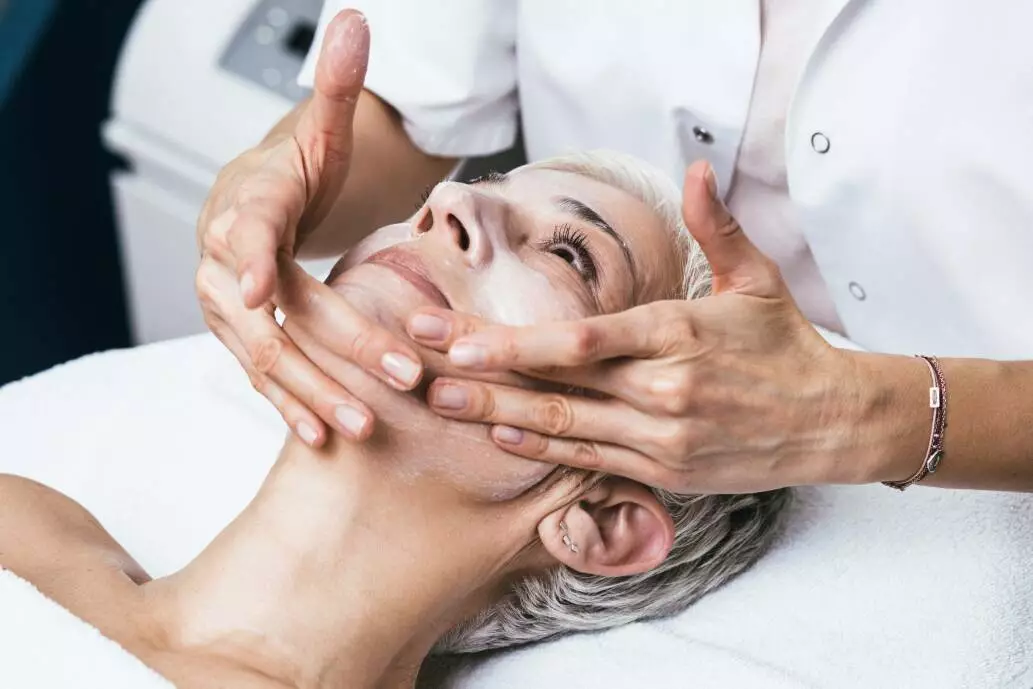Mandelic peels have gained popularity in the skincare community due to their gentle yet effective exfoliating properties. Unlike harsher chemical peels, mandelic peels are suitable for various skin types, making them a preferred choice for those seeking a brighter and more refined complexion. The success of these treatments largely depends on their unique formulation, particularly the active ingredients. In this article, we’ll explore the key components found in Mandelic Peel in Dubai solutions, highlighting their roles and benefits for the skin.
What is Mandelic Acid?
Mandelic acid is an alpha hydroxy acid (AHA) derived from bitter almonds. It features a larger molecular structure than other AHAs like glycolic acid, allowing for slower penetration into the skin. This property makes it less irritating, making mandelic acid an ideal choice for sensitive skin types.
Key Benefits of Mandelic Acid
- Gentle Exfoliation: It effectively removes dead skin cells, revealing a smoother, more radiant complexion without causing significant irritation.
- Improvement in Skin Tone: Mandelic acid can help reduce hyperpigmentation and promote a more even skin tone.
- Acne Control: Its antibacterial properties make it effective in managing acne, as it helps to unclog pores and reduce breakouts.
- Stimulates Collagen Production: Regular use of mandelic acid can enhance collagen synthesis, leading to improved skin elasticity and a reduction in fine lines.
Common Ingredients in Mandelic Peel Formulations
While mandelic acid is the star ingredient, mandelic peel solutions often contain additional components that enhance their efficacy. Below are some of the common ingredients found in mandelic peel formulations:
1. Lactic Acid
Function: Another AHA, lactic acid, is known for its hydrating properties. It aids in moisture retention while providing gentle exfoliation.
Benefits:
- Enhances the peel's hydrating effect, preventing dryness post-treatment.
- Boosts skin brightness and helps even out skin tone.
2. Salicylic Acid
Function: A beta hydroxy acid (BHA), salicylic acid is oil-soluble, allowing it to penetrate deep into the pores.
Benefits:
- Ideal for oily and acne-prone skin, as it helps to clear out blocked pores.
- Reduces inflammation and redness associated with breakouts.
3. Hyaluronic Acid
Function: Known for its incredible moisture-retaining properties, hyaluronic acid helps hydrate and plump the skin.
Benefits:
- Provides hydration during and after the peel process, mitigating potential dryness.
- Enhances the overall texture and smoothness of the skin.
4. Glycolic Acid
Function: Another common AHA, glycolic acid is frequently included in peel solutions for its strong exfoliating properties.
Benefits:
- Works synergistically with mandelic acid to enhance exfoliation.
- Helps in reducing the appearance of fine lines and improving skin texture.
5. Vitamin C
Function: A powerful antioxidant, vitamin C helps to protect the skin from free radicals and environmental stressors.
Benefits:
- Brightens the complexion and reduces signs of pigmentation.
- Supports collagen synthesis, enhancing skin elasticity and firmness.
6. Niacinamide (Vitamin B3)
Function: Niacinamide is known for its anti-inflammatory properties and ability to strengthen the skin barrier.
Benefits:
- Helps to calm irritated skin, making it suitable for sensitive types undergoing peeling.
- Improves the appearance of enlarged pores and uneven skin tone.
7. Aloe Vera Extract
Function: Aloe vera is renowned for its soothing and hydrating properties.
Benefits:
- Calms the skin post-peel and reduces redness or irritation.
- Provides additional moisture and nourishment.
8. Green Tea Extract
Function: A potent antioxidant, green tea extract is often added for its anti-inflammatory benefits.
Benefits:
- Helps soothe and protect the skin from oxidative stress.
- Enhances the skin's overall appearance by reducing inflammation.
How to Choose a Mandelic Peel Solution
When selecting a mandelic peel, it's essential to consider the formulation and your specific skin needs. Here are some tips for choosing the right mandelic peel solution:
- Assess Your Skin Type: Determine whether your skin is sensitive, oily, dry, or combination to choose a formulation that suits your needs.
- Check Ingredient List: Look for formulations that include complementary ingredients such as hyaluronic acid or niacinamide for added hydration and soothing properties.
- Consult a Professional: If unsure, seek advice from a licensed skincare professional who can recommend products based on your skin type and concerns.
- Consider Concentration Levels: Depending on your experience with chemical peels, opt for a lower concentration of mandelic acid if you're new to peeling treatments.
Conclusion
Mandelic peels stand out in the realm of skincare due to their gentle yet effective formulation. The combination of mandelic acid with complementary ingredients such as lactic acid, hyaluronic acid, and antioxidants provides a holistic approach to achieving radiant, healthy skin.
By understanding the ingredients that go into mandelic peel solutions, you can make informed decisions about your skincare routine and experience the revitalizing benefits of this popular treatment. Whether you're aiming to reduce fine lines, improve skin texture, or simply enhance your natural glow, a mandelic peel could be the perfect addition to your skincare arsenal.






Comments